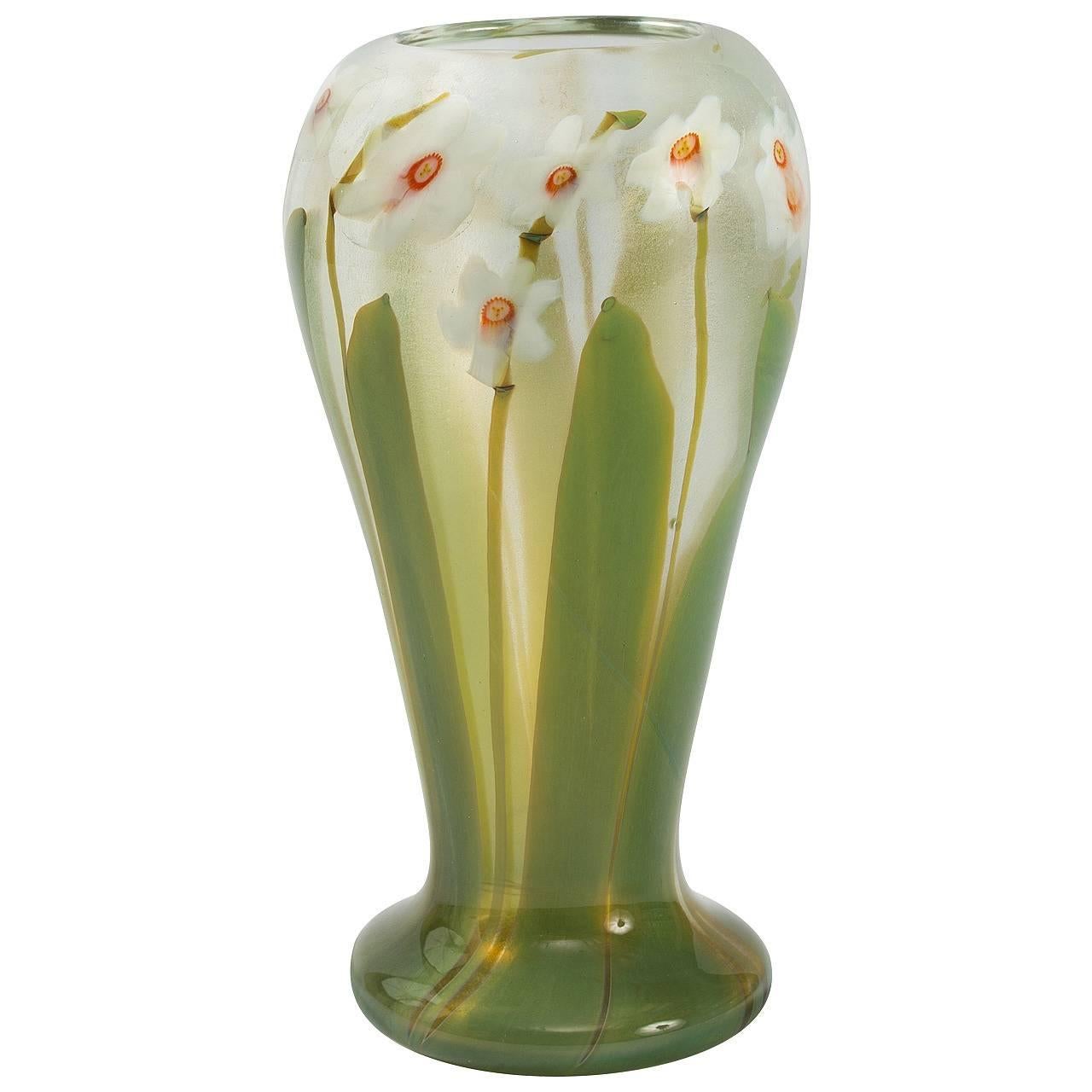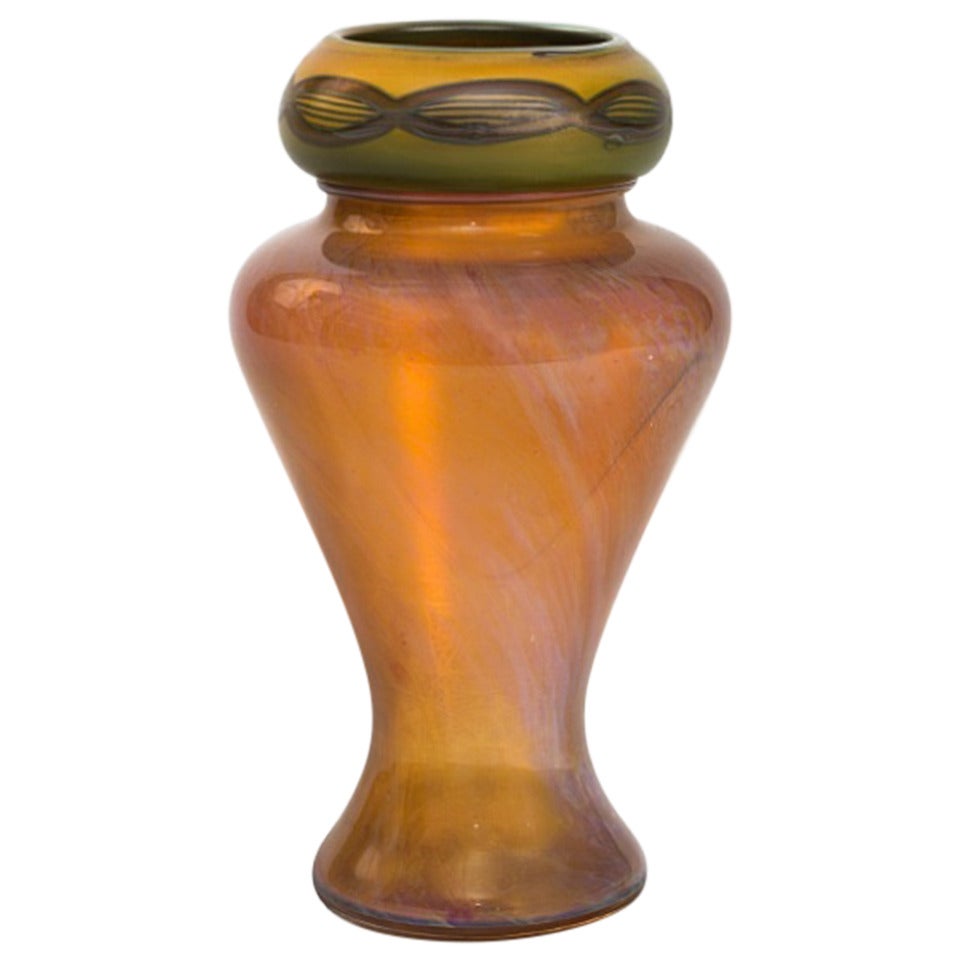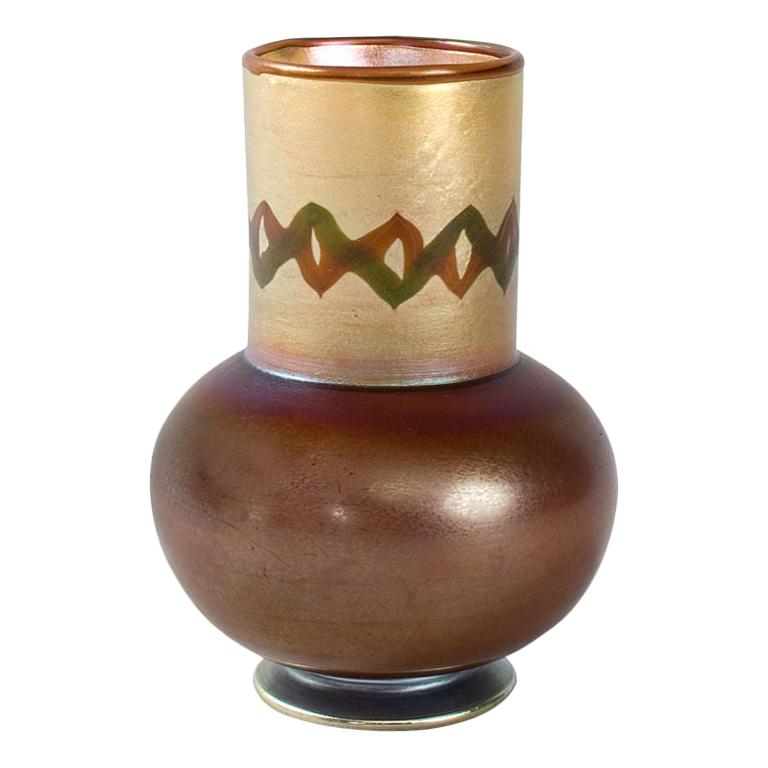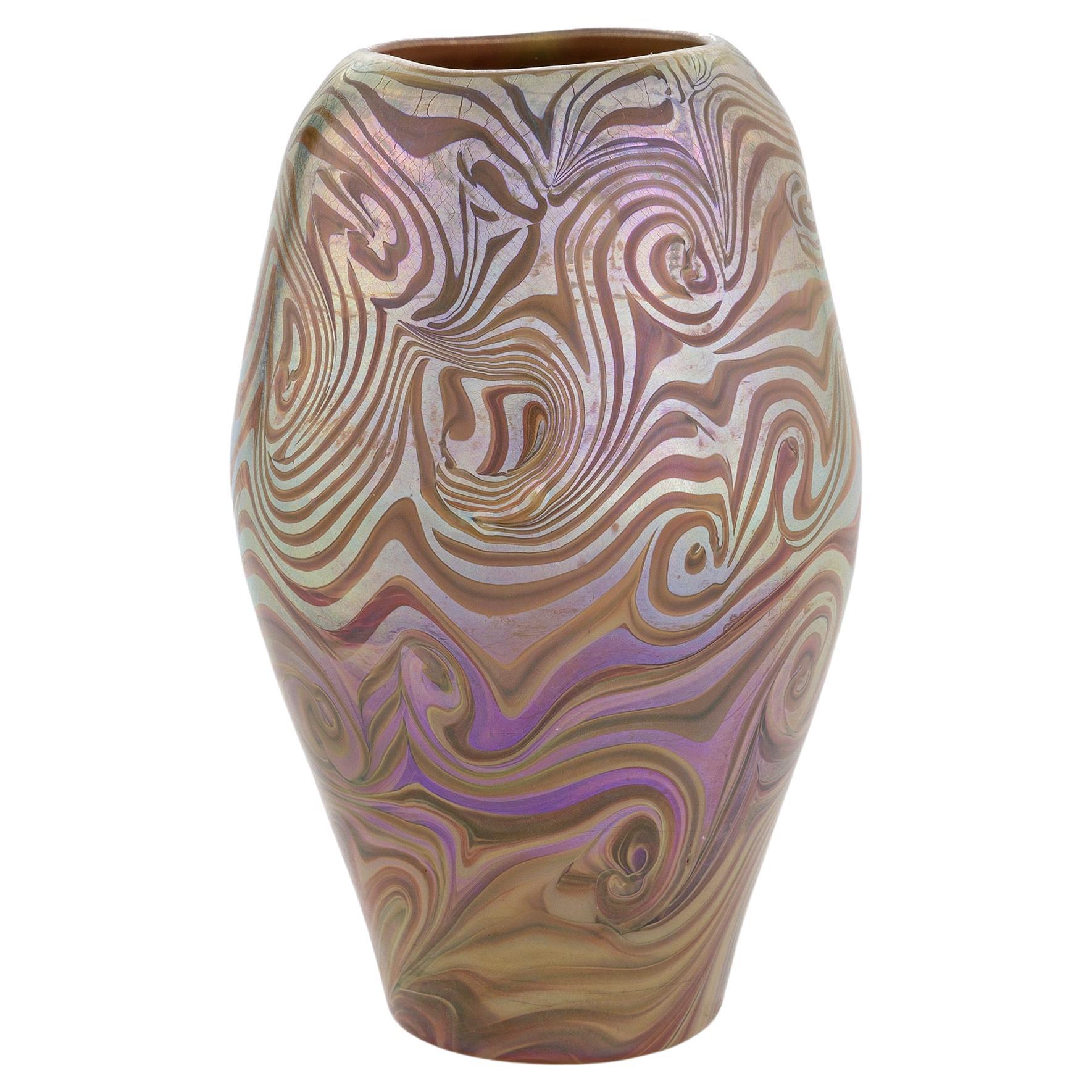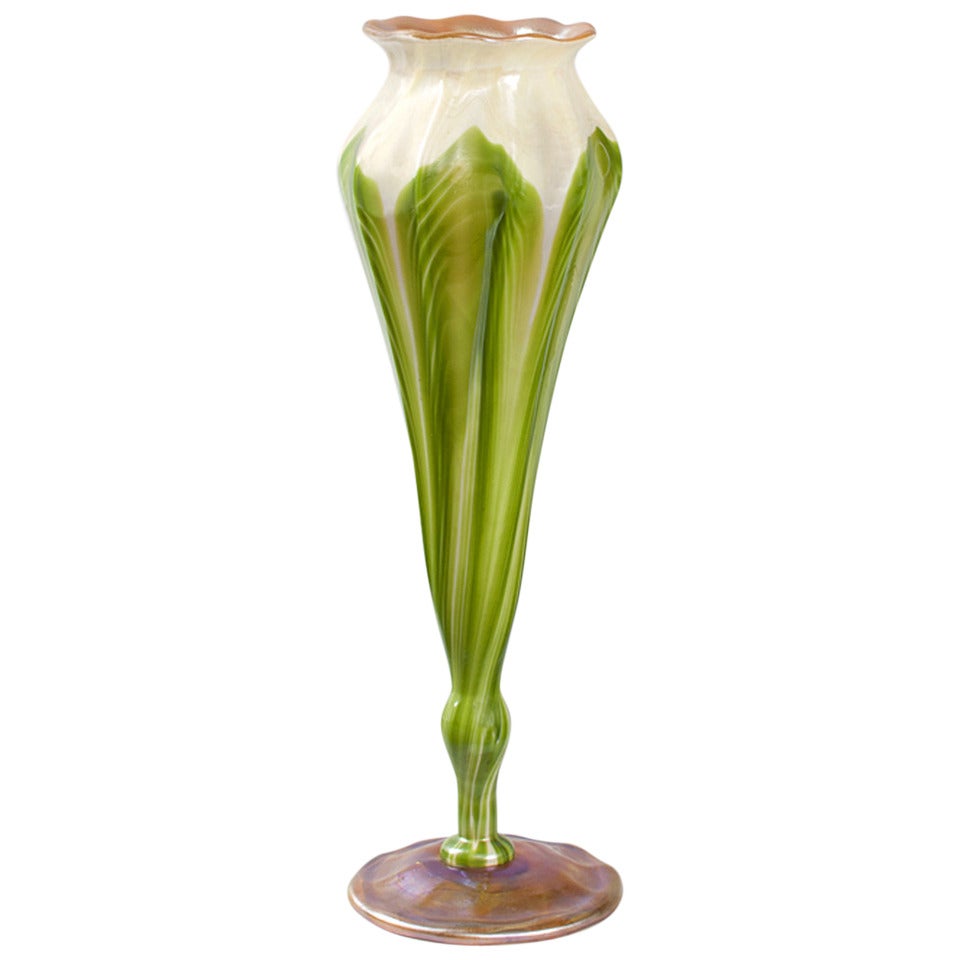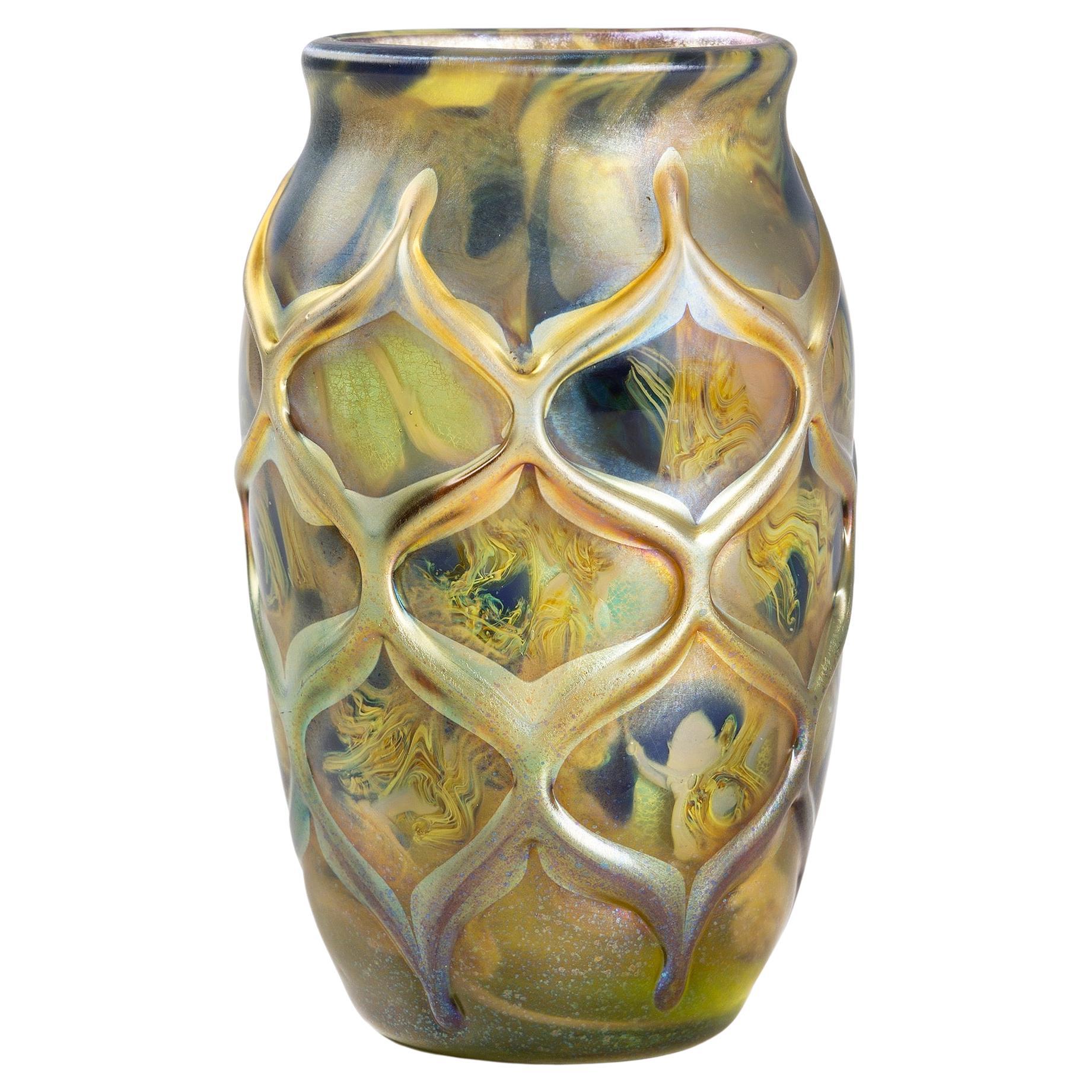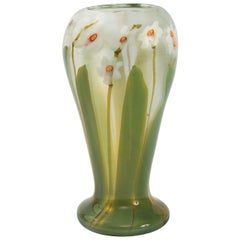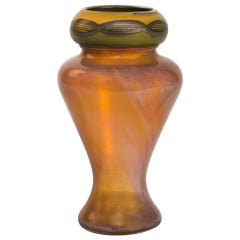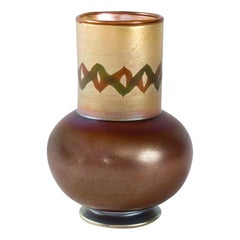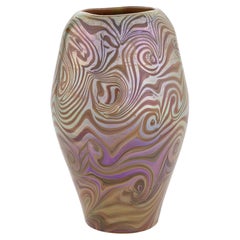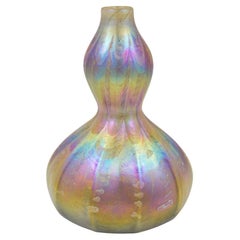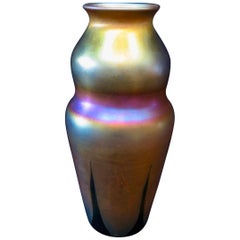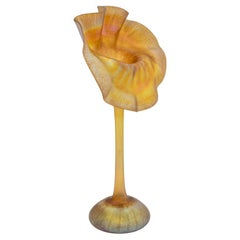Tiffany Studios New York Monumental "Peacock" Vase
Acerca del artículo
- Creador:Tiffany Studios (Taller/Estudio)
- Dimensiones:Altura: 57,15 cm (22,5 in)Diámetro: 20,32 cm (8 in)
- Estilo:Art Nouveau (Del período)
- Materiales y técnicas:
- Lugar de origen:
- Época:
- Fecha de fabricación:1900
- Estado:
- Ubicación del vendedor:New York, NY
- Número de referencia:Vendedor: T-219531stDibs: LU885445250112
Tiffany Studios
Las luminarias artesanales de queroseno y las primeras eléctricas creadas en Tiffany Studios figuran ahora entre los objetos decorativos más codiciados del mundo. Los diseños Tiffany de cualquier tipo son emblemáticos del gusto y la artesanía, y el vidrio Tiffany se refiere a mucho más que vidrieras y objetos decorativos de vidrio. La oferta de la icónica fábrica multimedia incluye lámparas de pie de vidrieras , lámparas de araña y jarrones de metal esmaltado . Las más reconocibles y apreciadas de sus obras son antique Tiffany Studios table lamps.
El nombre de Tiffany suele hacer pensar en dos cosas: espléndidos regalos en cajas azul huevo de petirrojo y exquisitas vidrieras. En 1837, Charles Lewis Tiffany cofundó la primera - Tiffany & Co., uno de los proveedores de artículos de lujo más destacados de Estados Unidos -, mientras que su hijo, Louis Comfort Tiffany, es responsable de ejemplares de la segunda.
Louis fue sin duda el artista decorativo estadounidense más influyente y consumado de las décadas que abarcaron finales del siglo XIX y principios del XX. En lugar de unirse al negocio familiar, estudió pintura con varios maestros, en particular con el pintor escénico Samuel Colman, mientras pasaba largas temporadas recorriendo Europa y el norte de África. Aunque pintó durante toda su carrera, las visitas a iglesias continentales despertaron en él un interés apasionado por las vidrieras . Tiffany empezó a experimentar con el material y en 1875 abrió una fábrica-laboratorio de vidrio en Corona, Queens, el núcleo de lo que con el tiempo se convertiría en Tiffany Studios.
En sus diseños de vidrio, Tiffany adoptó el movimiento emergente Art Nouveau y sus formas y motivos sinuosos y naturalistas . En 1902, además de vidrio, Tiffany diseñaba lámparas de cristal de colores y candelabros, así como jarrones de metal esmaltado, cajas y cuencos, y artículos como juegos de escritorio y candelabros. Hoy en día, estas piezas personifican la rica estética de su época.
La mayor parte del mérito de las lámparas de mesa y otros accesorios de Tiffany Studios corresponde a Louis. Sin embargo, en realidad fue Clara Driscoll (1861-1944), natural de Ohio y jefa del Departamento Femenino de Corte de Vidrio durante 17 años, quien fue el genio de las lámparas Tiffany más buscadas por los coleccionistas actuales. Una galería permanente de lámparas Tiffany en la Sociedad Histórica de Nueva York rinde homenaje a las mujeres anónimas que se esconden tras las deseables lámparas.
Encuentra lámparas antiguas de Tiffany Studios, objetos decorativos de cristal y otras obras en 1stDibs.
- EnvíoRecuperando presupuesto…Envío desde: New York, NY
- Política de devolución
Más de este vendedor
Ver todoAntiguo, Principios del 1900, Estadounidense, Art Nouveau, Jarrones
Vidrio artístico
Antiguo, Principios del 1900, Estadounidense, Art Nouveau, Jarrones
Vidrio artístico
principios del siglo XX, Estadounidense, Art Nouveau, Jarrones
Vidrio artístico
principios del siglo XX, Estadounidense, Art Nouveau, Jarrones
Vidrio
Vintage, Década de 1910, Estadounidense, Art Nouveau, Jarrones
Vidrio artístico
Antiguo, Fines del siglo XIX, Jarrones
Vidrio
También te puede gustar
Antiguo, Década de 1890, Estadounidense, Art Nouveau, Jarrones
Vidrio
principios del siglo XX, Estadounidense, Art Nouveau, Jarrones
Vidrio
principios del siglo XX, Estadounidense, Art Nouveau, Jarrones
Vidrio artístico
Antiguo, Principios del 1900, Estadounidense, Art Nouveau, Jarrones
Vidrio
Antiguo, Principios del 1900, Estadounidense, Jarrones
Vidrio
Antiguo, Década de 1890, Jarrones
Vidrio artístico
